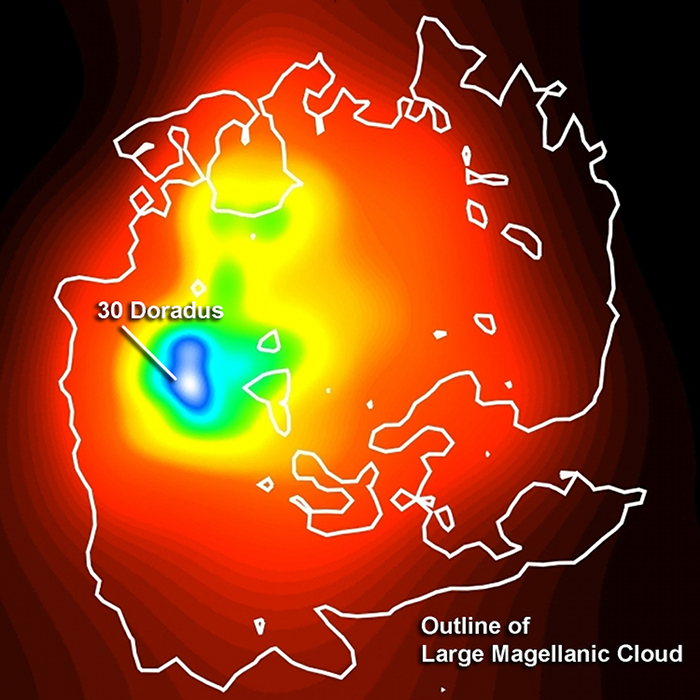

Credit: NASA/DOE/Fermi LAT Collaboration
The LMC in Gamma Rays
Our Milky Way is suffused by a glow of gamma rays, produced by pieces of atoms (cosmic rays) accelerated to extreme speeds (nearly the speed of light) which collide with clouds of gas and dust in the Galactic plane. The engine that accelerates these cosmic rays are still a mystery. What can produce the enormous energies required? Astrophysicists have identified some sites of cosmic ray production near powerful supernova shocks in the Milky Way. But a full understanding of these processes requires comparison with gamma-ray emission in external galaxies. Thanks to the Large Area Telescope on the Fermi Gamma-ray Space Telescope, astrophysicists have a tool with the needed sensitivity to study gamma-ray emission from galaxies beyond the Milky Way. The image above shows a Fermi Gamma-ray image of the Large Magellanic Cloud (shown by the white contours). The LAT clearly detects excess gamma-ray emission in the LMC. What's more, and what's surprising, is that the most intense gamma-ray emission is associated with the 30 Doradus region, a very young region of intense star formation. It may be that energetic processes associated with the birth of young stars may also help power the cosmic rays that light up galaxies in gamma rays.
Published: November 16, 2009
<
HEA Dictionary ● Archive
● Search HEAPOW
● Other Languages
● HEAPOW on Facebook
● Download all Images
● Education ● HEAD
>

Each week the HEASARC
brings you new, exciting and beautiful images from X-ray and Gamma ray
astronomy. Check back each week and be sure to check out the HEAPOW archive!
Page Author: Dr. Michael F. Corcoran
Last modified Tuesday, 27-Feb-2024 10:06:43 EST


